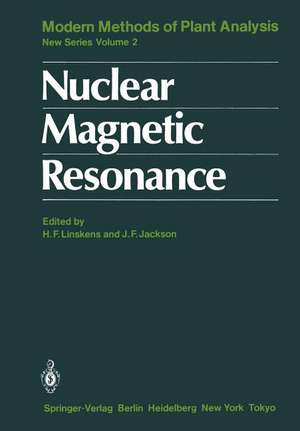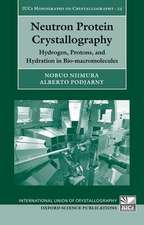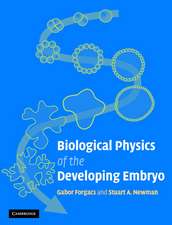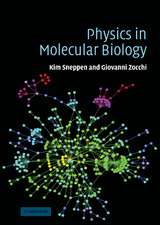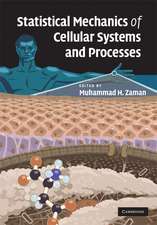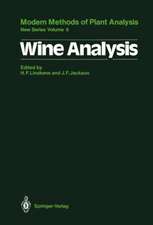Nuclear Magnetic Resonance: Molecular Methods of Plant Analysis, cartea 2
Editat de Hans-Ferdinand Linskens Contribuţii de C. Abell Editat de John F. Jackson Contribuţii de P. Bendel, C. Dumas, R.C. Hirst, C. Kerhoas, D.C. McCain, J.K.M. Roberts, T.J. Simpson, J. Visintaineren Limba Engleză Paperback – 8 dec 2011
Din seria Molecular Methods of Plant Analysis
- 15%
 Preț: 649.54 lei
Preț: 649.54 lei - 15%
 Preț: 648.42 lei
Preț: 648.42 lei - 15%
 Preț: 643.16 lei
Preț: 643.16 lei - 18%
 Preț: 896.84 lei
Preț: 896.84 lei - 18%
 Preț: 1228.77 lei
Preț: 1228.77 lei - 15%
 Preț: 642.36 lei
Preț: 642.36 lei - 15%
 Preț: 638.57 lei
Preț: 638.57 lei - 15%
 Preț: 636.12 lei
Preț: 636.12 lei - 15%
 Preț: 637.13 lei
Preț: 637.13 lei - 15%
 Preț: 634.68 lei
Preț: 634.68 lei - 18%
 Preț: 950.33 lei
Preț: 950.33 lei - 18%
 Preț: 947.50 lei
Preț: 947.50 lei - 18%
 Preț: 950.33 lei
Preț: 950.33 lei - 18%
 Preț: 1219.01 lei
Preț: 1219.01 lei - 18%
 Preț: 1219.31 lei
Preț: 1219.31 lei - 15%
 Preț: 643.99 lei
Preț: 643.99 lei - 15%
 Preț: 641.71 lei
Preț: 641.71 lei - 15%
 Preț: 641.03 lei
Preț: 641.03 lei - 15%
 Preț: 648.24 lei
Preț: 648.24 lei - 15%
 Preț: 645.60 lei
Preț: 645.60 lei -
 Preț: 399.67 lei
Preț: 399.67 lei - 15%
 Preț: 647.08 lei
Preț: 647.08 lei
Preț: 637.93 lei
Preț vechi: 750.50 lei
-15% Nou
Puncte Express: 957
Preț estimativ în valută:
122.07€ • 130.53$ • 101.78£
122.07€ • 130.53$ • 101.78£
Carte tipărită la comandă
Livrare economică 17 aprilie-01 mai
Preluare comenzi: 021 569.72.76
Specificații
ISBN-13: 9783642826115
ISBN-10: 3642826113
Pagini: 212
Ilustrații: XII, 196 p. 4 illus.
Dimensiuni: 170 x 244 x 11 mm
Greutate: 0.35 kg
Ediția:Softcover reprint of the original 1st ed. 1986
Editura: Springer Berlin, Heidelberg
Colecția Springer
Seria Molecular Methods of Plant Analysis
Locul publicării:Berlin, Heidelberg, Germany
ISBN-10: 3642826113
Pagini: 212
Ilustrații: XII, 196 p. 4 illus.
Dimensiuni: 170 x 244 x 11 mm
Greutate: 0.35 kg
Ediția:Softcover reprint of the original 1st ed. 1986
Editura: Springer Berlin, Heidelberg
Colecția Springer
Seria Molecular Methods of Plant Analysis
Locul publicării:Berlin, Heidelberg, Germany
Public țintă
Professional/practitionerCuprins
13C-NMR in Metabolic Studies.- 1 Introduction.- 2 The Design and Interpretation of Labelling Experiments.- 3 Radioisotope Labelling.- 4 13C NMR Spectroscopy.- 5 Biosynthetic Methodology.- 6 13C Enrichment Studies.- 7 13C, 15N Doubly Labelled Precursors.- 8 Isotope-Induced Shifts in 13C NMR.- 9 Conclusion.- References.- Determination of the Energy Status of Plant Cells by 31P-Nuclear Magnetic Resonance Spectroscopy.- 1 Introduction.- 2 Principles.- 3 Experimental Considerations.- 4 Quantitation of Metabolite Concentrations of vivo by NMR.- 5 Measurement of Nucleoside Di- and Triphosphate Levels by 31P-NMR.- 6 Estimation of the Extent of Magnesium Ion Binding to Nucleoside Triphosphates in vivo by 31P-NMR.- 7 Measurement of the Gibbs’ Free Energy for Hydrolysis of ATP.- 8 Relationship of in vivo 31P-NMR Measurements to What Is Seen by Other Methods.- 9 Conclusions.- References.- The Use of NMR Spectroscopy to Follow Deuterium in Studies of Fungal Metabolism.- 1 Introduction.- 2 Deuterium NMR Spectroscopy.- 3 Detection of Deuterium Indirectly in the 13C-NMR Spectrum.- 4 Conclusions.- References.- Proton NMR Studies on DNA Structure.- 1 Introduction.- 2 Theoretical Background.- 3 Examples.- 4 Summary.- References.- NMR Methods for Determination of Intracellular pH.- 1 Introduction.- 2 Some Principles.- 3 Determinants of Chemical Shift.- 4 Measurement of Chemical Shifts.- 5 Estimating Intracellular pH from Chemical Shifts: Titration Curves.- 6 Other Factors Contributing to Potential Errors in Intracellular pH Measurements Using NMR.- 7 Observation of pH Heterogeneity in Cell Populations and Tissues by NMR.- 8 NMR Signals That Have Been Used as Intracellular pH Indicators.- 9 Assignment of Resonances.- 10 Can the pH in Compartments Other Than Cytoplasm and Vacuole beMeasured in Vivo by NMR Methods?.- 11 Conclusions.- References.- Orientation of Chloroplasts in Leaves by 1H NMR Spectroscopy.- 1 Introduction.- 2 Experimental Technique.- 3 Data Analysis.- 4 Examples of Interpreted Spectra.- 5 Future Directions.- References.- 13C-NMR Determination of Rubber Content in Guayule Bushes.- 1 Introduction.- 2 Experimental.- 3 Results and Discussion.- 4 Conclusions.- Appendix A 13C-NMR Method.- References.- Nuclear Magnetic Resonance and Pollen Quality.- 1 What is the Pollen Grain?.- 2 1H-NMR — Water Content.- 3 31P, 13C-NMR and Membrane State.- 4 Conclusions.- References.
